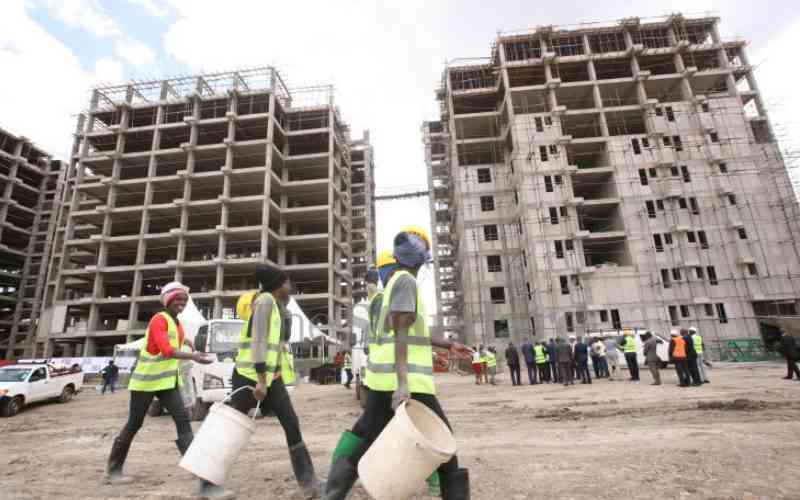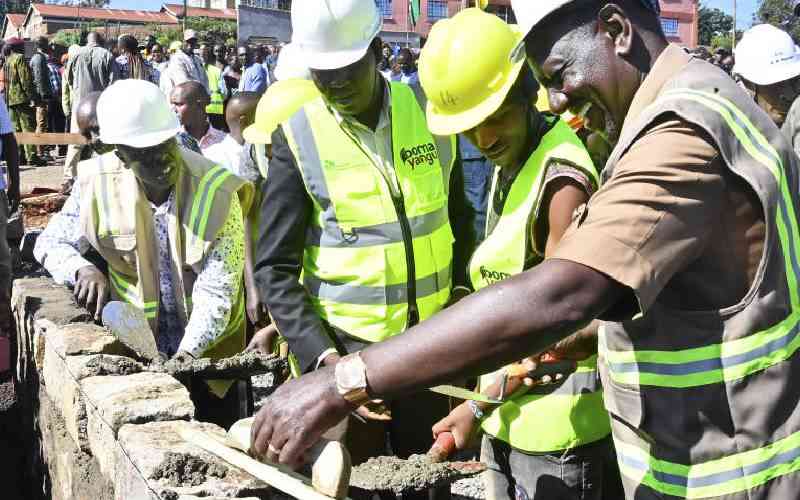In 2003, Kenyans were voted the most optimistic people in the world courtesy of the country’s peaceful and democratic transition touted as a model of Third World democracy.
Purse strings abroad were loosened and billions of shillings poured into the Exchequer to finance the National Rainbow Coalition’s (Narc) pledges of free education, subsidised housing, economic recovery and a resurgent, vibrant stock exchange.
Over the intervening years, there have been unmitigated successes in provision of education, great strides in health service provision through devolved decision making and financing to the grassroots level through the Constituency Development Fund and the economy is purring again. Tourist numbers have surged as visitors regain confidence in East Africa’s economic powerhouse.
What remain are the sticky issues of a new constitution that has suffered stillbirth and betrayals on the political front. There are seemingly new battlefronts being opened weekly over these.
That notwithstanding, Government needs to be constantly reminded of its slow pace towards achieving Millennium Development Goals (MDGs). With six years until the 2015 deadline to achieve MDGs, the pace in the fight against poverty and hunger has slowed, according to a UN progress report last year. The world body and indeed, all Kenyans, are egging on the Government to fast-track its agenda towards achieving MDGs in the stipulated time.
Specific action plan
Millennium Development Goals are to: Eradicate extreme poverty; Achieve universal primary education; Promote gender equality and empower women; Reduce child mortality; Improve maternal health; Combat HIV and Aids, Malaria and other diseases; Ensure environmental sustainability and global partnership for development.
In poverty reduction, one specific action plan is provision of adequate and affordable shelter. In this regard, the Government has largely remained on track.
Studies showed that the civil service and security organs were demotivated and poorly paid and needed a morale booster.
All political manifestos in 2003 pointed to the need for affordable housing. And the Civil Servants Housing Scheme Fund (CSHSF) was born under Legal Notice No. 98 of September 15, 2004. The programme seeks "to divest the Government of the responsibility of direct housing of its employees except those involved in essential services, and instead encourage them to own their houses."
Through the scheme, the State extended financing to civil servants in order to make homes affordable. In Nairobi, for instance, it saw run-down houses in Ngara, Pangani, Jogoo, Upper Hill, Kileleshwa and Kilimani, refurbished and sold to civil servants.
To scale up the programme, more funding was provided that spurred a police housing project that is inching towards completion in Nairobi and several provincial capitals.
Another is Kenya Slum Upgrading Programme (KENSUP) to address the shortage of housing affecting majority of the urban population in slums.
It is a partnership between the Government and UN-Habitat signed in 2003 to upgrade informal settlements starting with selected slums in Nairobi, Mavoko, Mombasa and Kisumu.
Double-digit growth
Stay informed. Subscribe to our newsletter
Granted, demand for housing units far outstrips supply and Government’s efforts. But it is inching forward. Home provision is no doubt a chip on the Government’s shoulder. And as long as Government remains on track with the idea of social welfare, other milestones like doubling of the economy’s size, achieving a double-digit growth rate and a 24-hour Nairobi City and Mombasa port would be attained within the longer-term action plan of Vision 2030.
Despite the about-turns and broken promises that have littered the Kenyan political landscape, since 2003, provision of more housing units must continue to match the burgeoning urban population.
 The Standard Group Plc is a
multi-media organization with investments in media platforms spanning newspaper
print operations, television, radio broadcasting, digital and online services. The
Standard Group is recognized as a leading multi-media house in Kenya with a key
influence in matters of national and international interest.
The Standard Group Plc is a
multi-media organization with investments in media platforms spanning newspaper
print operations, television, radio broadcasting, digital and online services. The
Standard Group is recognized as a leading multi-media house in Kenya with a key
influence in matters of national and international interest.
 The Standard Group Plc is a
multi-media organization with investments in media platforms spanning newspaper
print operations, television, radio broadcasting, digital and online services. The
Standard Group is recognized as a leading multi-media house in Kenya with a key
influence in matters of national and international interest.
The Standard Group Plc is a
multi-media organization with investments in media platforms spanning newspaper
print operations, television, radio broadcasting, digital and online services. The
Standard Group is recognized as a leading multi-media house in Kenya with a key
influence in matters of national and international interest.








